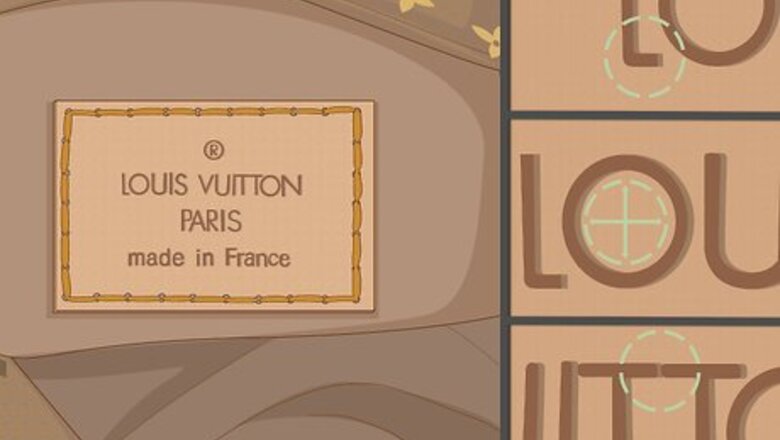
views
Authenticating Based on the Stamps and Pattern
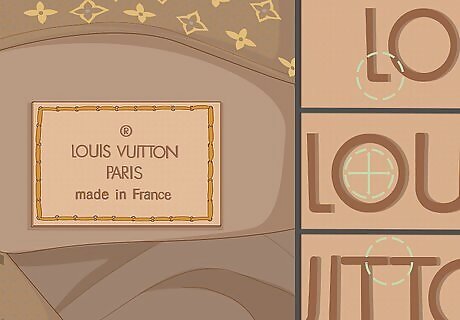
Locate the “made in” stamp imprinted in the leather on the bag. Authentic Louis Vuitton Bags always include a stamp that says “Louis Vuitton” and “made in France” (or another country if it was made elsewhere) underneath it. If your bag is missing this stamp, then it is likely a fake. Look for the stamp pressed directly into the leather of your bag. The stamp should include certain features which will indicate its authenticity. These include: A short leg the bottom of the Ls. Os that are round and bigger than the L. Ts that are so close they appear to be touching. Lettering that is thin and crisp. Tip: If you’re unsure of how the stamp should look, try comparing the lettering on the bag to an authentic Louis Vuitton stamp image.
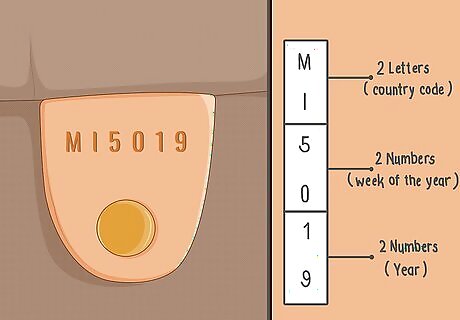
Check to see if the bag’s date code matches the “made in” stamp. Look for the date code inside of the bag right along the top edge of the bag’s opening. The date code should include 2 letters and a 4 digit number. The first 2 numbers in the 4 digit number indicate the week of the year and the second 2 indicate the year. The letters indicate where the bag was made. If the letters in the date code indicate a different country than the “made in” stamp, then the bag is likely a fake. Be aware that bags made prior to 1980 will not have a date code, so this will not help you to authenticate a vintage bag. There are many different letter codes to indicate the region of a country that the bag was made in, so you might have to look up the code to figure out if it matches the "made" in stamp. For example, "MI," "SD," "TH," and "VI" are all letter codes for different regions of France.
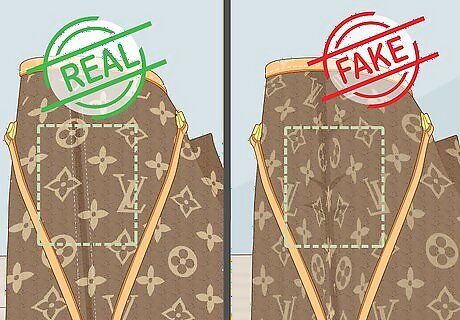
Ensure that the pattern is even throughout the bag. The bag’s print should be a mirror image of itself going all the way across the bag. If a circle design is cut off on 1 side, then it should be cut off at exactly the same point on the other side of the bag. The pattern should also look straight, never at an angle or crooked. Note that if the logo is hidden or cut off any where it is likely a knockoff. The other designs on a Louis Vuitton bag might be cut off at some places, but the LV logo will not be cut off on an authentic bag.
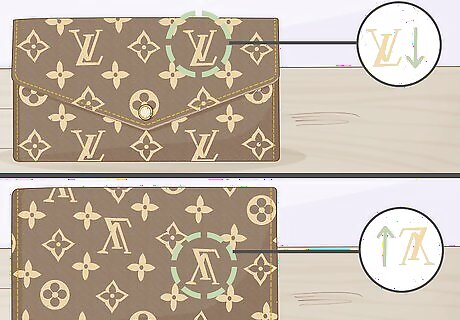
Look for upside down LV’s on the back of the bag. Since Louis Vuitton uses one continuous strip of leather to make bags, the LV logos should appear right side up on the front side of the bag and upside down on the backside of the bag. If the bag was not made from 1 continuous strip or if the LV logos are right side up on both sides of the bag, then it is likely a fake. Keep in mind that this only applies to Louis Vuitton bags that feature the logo on them. If your bag lacks this, then it won’t be a reliable way to authenticate the bag.
Examining the Hardware and Other Details
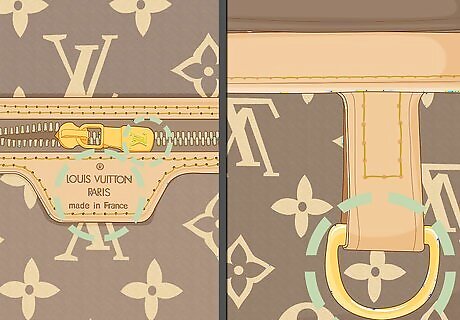
Examine the overall quality of the bag’s hardware and zipper. The hardware and zipper should be real metal with a gold coating on them. There should not be any discoloration or tarnish on the metal. It should look shiny and bright. If the hardware is plastic or if it looks tarnished, it’s likely a knockoff bag. Some other hardware features to look for include: Clean, precise printing on the hardware. You should be able to easily make out the words Louis Vuitton on the bag’s zipper pull and other hardware features. LV logos printed on the snaps if the bag has snaps. If the bag has snaps, but they don’t have a logo on them, then it is likely a fake.
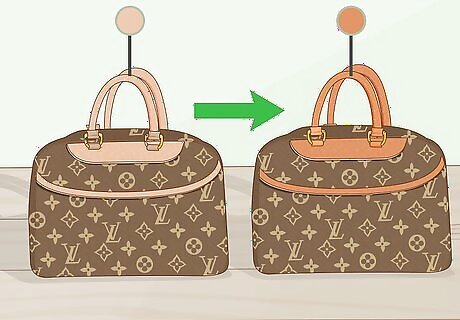
Look for a patina on the bag’s handles if it’s vintage. Over time, a Louis Vuitton’s handles will change from a bright white color to a brown or even a brownish red. This is a result of the leather oxidizing and absorbing oils from the owner’s skin as they handle the bag. The change in color is called the patina. It’s a normal part of the leather’s aging process. If you find a bag that is marketed as vintage and does not have a patina, then it is likely a fake. For example, if the bag was supposedly made in the 1990s, then the handles should be a deep shade of brown. If they are still a light tan or white, then the bag is a fake.Tip: If the bag’s handles are wrapped in plastic when you get it, then it is likely a fake.
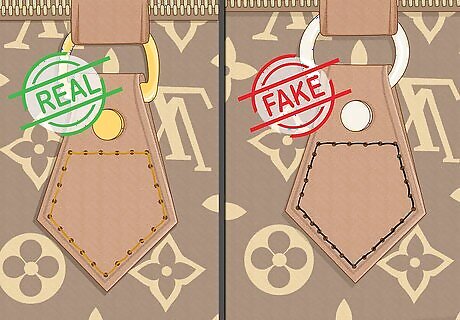
Look for 5 mustard-yellow stitches across the top of each handle. Louis Vuitton ensures that their bags have this number of stitches and they use a mustard-yellow thread to sew them, so more or less than 5 stiches or a different color of thread would be a dead giveaway that the bag is a fake. For example, if the thread is brown or black, it’s likely a fake. The stitching should look very neat and even as well. If the stitching is sloppy, the bag is likely a knockoff.
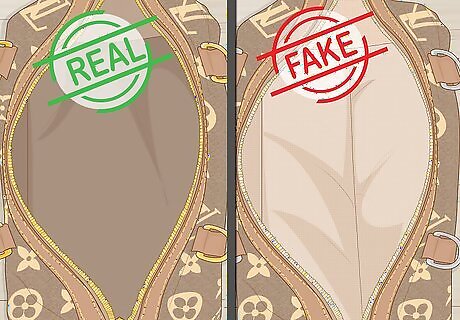
Inspect the interior lining to see if it’s brown canvas. Knock-offs use cheap plastic or suede to line their bags. However, an authentic Louis Vuitton will be lined with a brown canvas material. Depending on the specific design, a real Louis Vuitton bag may be lined with other textiles, such as cross-grain leather, polyester, or microfiber suede.
Evaluating the Seller
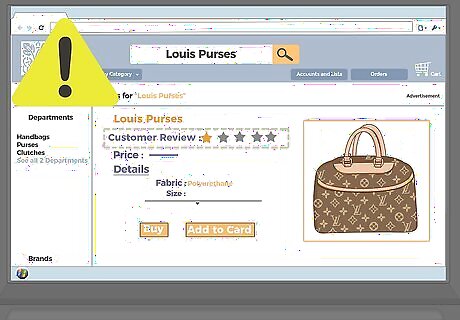
Research the seller before you buy. This is especially important if you’re purchasing a bag from an online auction or through a similar online venue. Check the seller’s feedback to see how their other customers have rated their products. Look for sellers with an overwhelmingly large percentage of positive feedback comments. Avoid sellers with negative feedback, zero feedback, or private feedback. Avoid sellers who have a no return policy as this indicates that they don't guarantee the quality of their products. Tip: Ask for additional pictures from the seller if there aren't many or if the photos don’t show the details that you need to authenticate the bag. They may be using pictures of real Louis Vuitton purses to sell fakes.
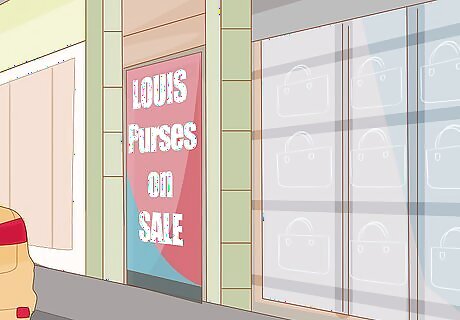
Be wary of sellers offering a bag at a considerably discounted price. A legitimate bag that retails in the hundreds would not sell for less than $100, especially not a new bag. This means that if the bag you find is supposed to be new and it's selling for a low price, it is probably a knockoff. You can find used Louis Vuitton bags for less than brand new ones, but these bags may also be quite expensive if they are rare or coveted by collectors.
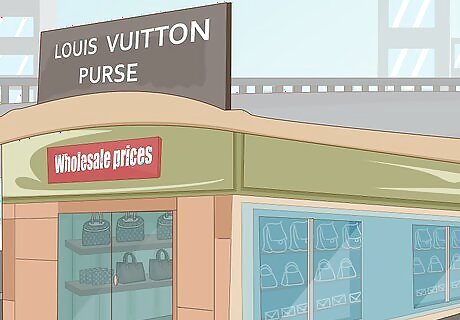
Avoid sellers offering "wholesale" or "closeout" bags. Any seller who claims to have bags from a "wholesale list" or "closeout liquidation" is likely to be selling fakes. Louis Vuitton does not discount, have outlets, or sell wholesale. Any seller who claims otherwise should not be trusted. If you encounter a seller claiming to have bags from a closeout or wholesale, then the bags are likely to be fake. Also, don’t buy Louis Vuitton purses from street vendors, since the company does not permit street vendors to carry their merchandise. These bags are most likely fake.















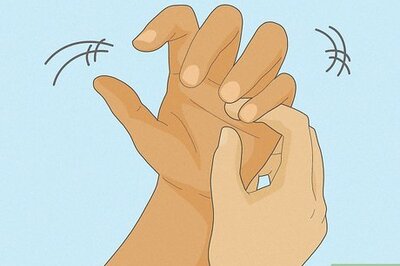
Comments
0 comment